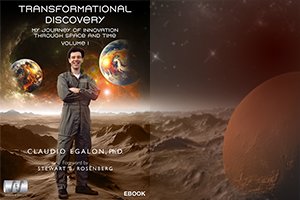This is a one hour long presentation.
In 1989, a group of Bell Lab scientists, at Murray Hill, NJ, published a paper about the first side illuminated optical fiber sensor. At the time, this group recognized one of side illumination’s advantages: its very high signal to noise ratio, SNR, if compared to its competing counterpart, axial illumination. Despite this recognition, these early pioneers abandoned their own creation and dedicated their efforts to the more established axial illumination. As a result, the task of championing this type of technique ended up in the hands of Dr. Claudio Oliveira Egalon who may also be counted among the earlier pioneers.
Despite side illumination’s simplicity, reliability, low cost and high SNR, it did not get much attention in its first 15 years of life. This is very puzzling, especially in view of the fact that, even today, its axial illumination counterpart is plagued with a low SNR and expensive instrumentation. Also, today we know that the technology required to commercialize this type of device was available even before 1989: something that was recognized only recently.
In this presentation, we will cover the evolution of this concept: from its earlier laboratory experiments at AT&T Bell Labs, NASA Langley and Old Dominion University, to its reduction to practice and the present day devices based on this technology. We will also cover the missteps taken along the way, the surprising revelations that were brushed aside, the lack of support for the continuing development of this technology, which still prevails today, and much of the drama that comes along with a technology that, for many years, has remained hidden in plain sight.

